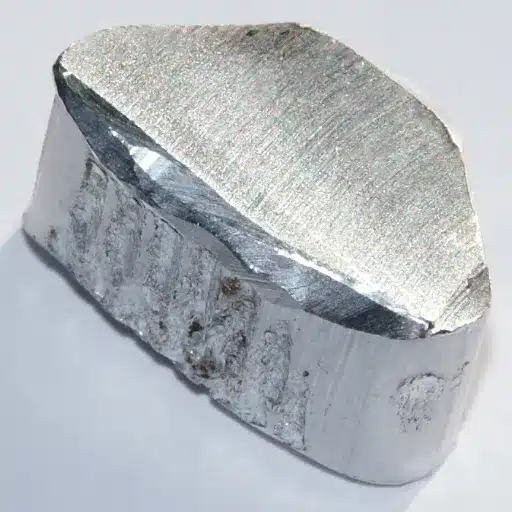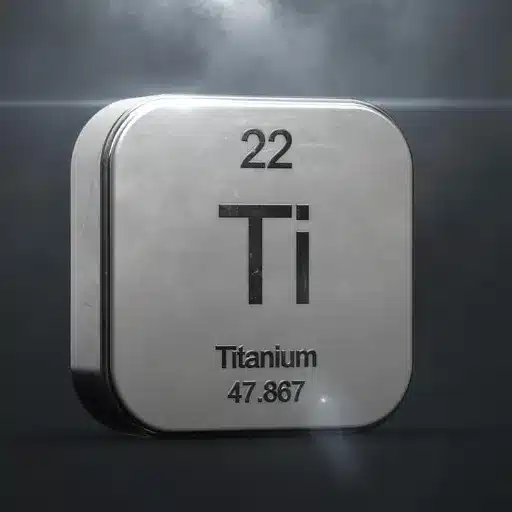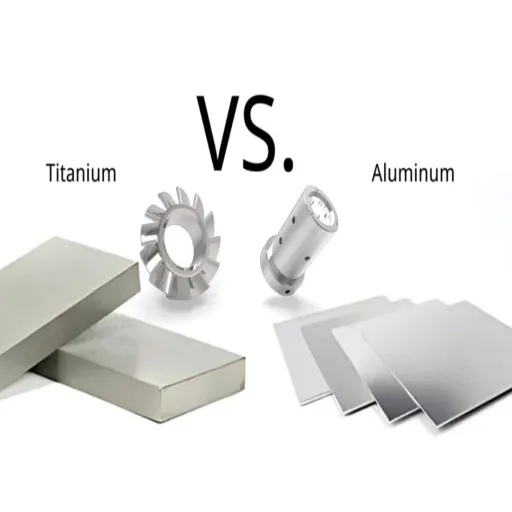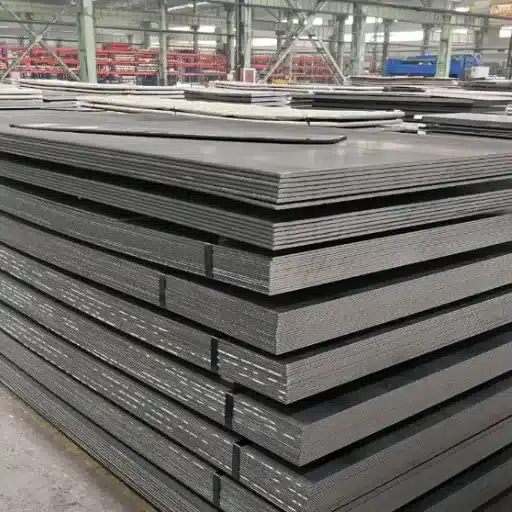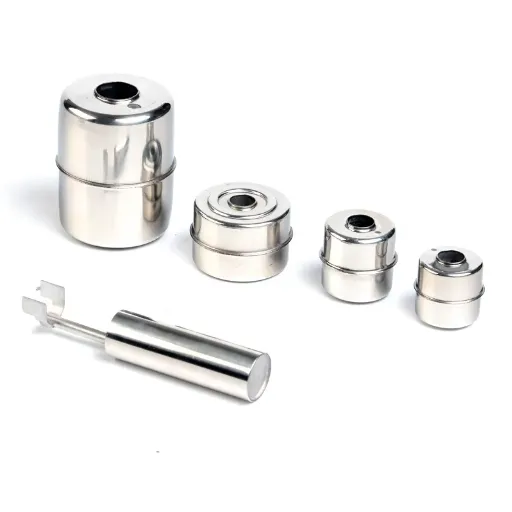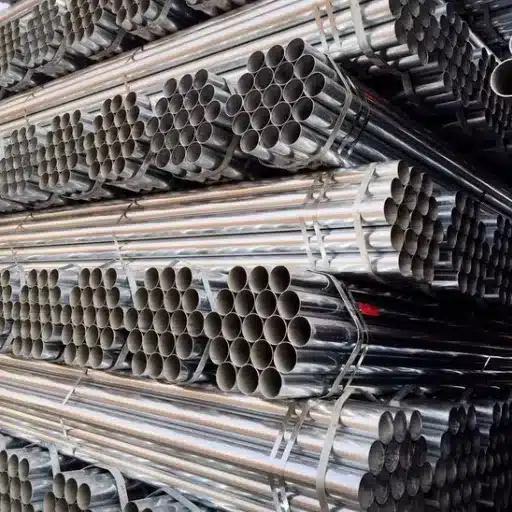The diverse industries have, for many years, praised stainless steel as a durable and reliable material. One of the types is the 304 stainless steel rectangular tube, which offers strength, the ability to resist corrosion, and adaptability. Whether it is construction, manufacturing, or architecture, knowing the properties of this material is essential. This guide will cover everything you need to know about 304 stainless steel rectangular tubes — their defining features and uses, as well as what makes them ideal for tough conditions. If you are looking to expand your knowledge or make educated decisions, you have come to the right place.
What Are the Key Properties of Stainless Steel Rectangular Tube?
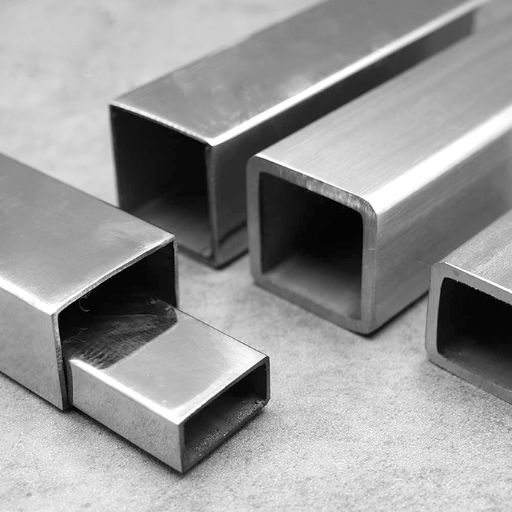
The stainless steel rectangular tubes have a reputation for their strength, which is due to their corrosion resistance, which gives them great durability. They are easy to weld, non-magnetic, and can withstand extreme temperatures. These tubes are very tame and useful. They have a smooth finish. This allows them to get that professional look and makes them easy to maintain, meaning their surface won’t stain. Additionally, their outstanding strength-to-weight ratio ensures that the weight is kept low without hampering stability. This makes them a widely accepted choice across construction, manufacturing, and architecture.
Corrosion Resistance Capabilities of Stainless Rectangular Tube
Stainless rectangular tubes are ideal for industries such as construction, marine, and chemical processing because of their exceptional corrosion resistance. Their chromium content, which forms a passive layer of chromium oxide on the surface, is a primary reason for their resistance. This layer prevents moisture, salt, and other environmental factors from having the damaging effects of corrosion.
The most noted for their superior corrosion resistance are stainless steel grades 304 and 316. Grade 304 is moderately corrosion-resistant, able to withstand rust and oxidation. Environmentally corrosive exposed applications are suited for grade 316 because of its increased molybdenum content, giving it greater corrosion resistance.
In a study, it was shown that 316 stainless steel was able to withstand chlorides with a concentration of 1,000 parts per million, while 304’s corrosion resistance was relatively lower. Along with this, the enduring nature of stainless rectangular tubes when exposed to chemical fumes or acid in industrial settings leads to lower maintenance costs over time.
Strength is another unique factor that can be found in stainless rectangular tubes; they can withstand high temperature and pressure without losing their mechanical integrity. This enables safe operation in equipment such as heat exchangers or in pipelines, safely transmitting the chemicals.
This extreme corrosion resistance combined with strength, physical appearance, and beauty makes stainless rectangular tubes a preferred choice for industries that face harsh environmental and chemical sub-challenges over time.
Structural Strength and Mechanical Properties
Stainless rectangular tubes are valuable in different fields due to their structural strength and exceptional mechanical properties. Stainless steel alloys like 304 and 316 are used to manufacture these tubes because of their formidable tensile strength as well as resistance to pressure deformation. To illustrate, stainless steel 304 possesses a tensile strength of approximately 515 MPa (megapascals), while stainless steel 316 often exceeds 570 MPa, meaning the material can endure dangerously high-stress settings.
Yet another remarkable mechanical property is yield strength, which is the load-bearing capacity of a solid until it begins to lose shape. Yield strengths for stainless rectangular tubes can range anywhere between 205 MPa to more than 240 MPa, which is dependent on alloy grade and other manufacturing processes. This ensures that the tubes can support significant weight without undergoing permanent deformation, particularly deformation that makes them ideal for Structural frameworks, parts for vehicles, and parts for heavy machines.
Moreover, stainless rectangular tubes also exhibit superior hardness and toughness, which enable resistance to impact forces, as well as extreme environments such as temperature swings and heavy vibrations. For this reason, they are extensively used in the construction sector where reliability is a mechanical must for reinforcing buildings, bridges, and other essential infrastructures. Stainless rectangular tubes can meet the unique demands of contemporary engineering because manufacturers have the flexibility to modify the strength-to-weight ratio of the tubes using treatments like cold working or annealing. This innovation supports multiple applications while maintaining safety standards.
Dimensional Specifications and Wall Thicknesses Available
Industries like construction, automotive, and manufacturing have working requirements that are fulfilled by stainless steel rectangular tubes. This is why they come in various specifications. As per industry requirements, the width of rectangular tubes is 10 mm to 300 mm, and the height is 20 mm to 500 mm. Moreover, their wall thicknesses vary between 1 mm and 20 mm. These dimensions enable different applications where structural strength, weight, and aesthetics considerations are required.
Precision rectangular tubes are available for industries that require tight tolerances. These tubes often feature thickness tolerances as low as ±0.2 mm, which makes them ideal for projects where high accuracy is required. In addition, high precision along with custom dimensions means that unique project specifications can easily be fulfilled.
Depending on the particular application, these tubes can also be offered in various lengths, starting from a standard 6 meters. Custom-cut lengths are also available on request. Sharp edge radius corners can be specified for practicality, where enhanced weldability enables smooth handling and improved visual appeal. These multiple options make stainless rectangular tubes suitable for modern engineering projects.
How Does 304 Stainless Steel Rectangular Tube Differ From Other Grades?
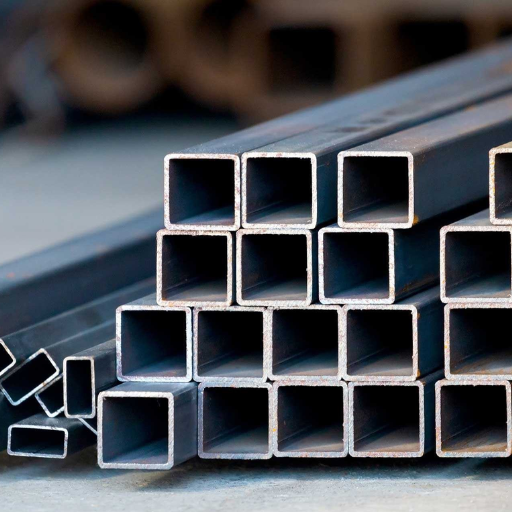
Other grades of steel do not contain the combination of exceptional durability, versatility, and corrosion resistance that 304 stainless steel rectangular tube does. This is because it contains a balanced proportion of chromium and nickel, which increases oxidation and rust resistance in varying environments. Unlike lower grades of steel, 304 can be used both indoors and outdoors. It can withstand moisture and exposure to various chemicals. In addition, it retains good weldability and formability, which makes it a top contender for projects that need strong structural integrity and an appealing exterior.
304 Stainless Steel vs Other Stainless Alloys
Among other alloys, 304 stainless steel is distinguished by its exceptional balance of cost, performance, and versatility. One useful comparison is with 316 stainless steel, which contains extra molybdenum for greater corrosion resistance, particularly in saline or chlorinated settings. While 316 is better for marine use or industrial processes with harsh chemicals, 304 tends to perform better in less aggressive environments, making it preferred because of its cost and versatile performance.
Durability is another point of comparison. For instance, ferritic stainless steels like 430 are less prone to corrosion but lack the high strength and weldability of 304. This makes 304 more suitable for structural applications or those that need precise shaping and fabrication.
In terms of material data, stainless steel 304 generally contains 18-20% chromium and 8-10.5% nickel, which enhances its resistance to corrosion. Its tensile strength is around 505 MPa (73,200 psi), and elongation at break is roughly 40%, giving it the ability to withstand mechanical stress and deformation. In comparison, 300 series alloys are usually better under extreme heat and stress than 400 series alloys, which are harder but less resistant to corrosion.
For budget-restricted undertakings, alloys such as 201 might be regarded as substitutes for 304. It must be noted, however, that 201 has less chromium and greater manganese, which lowers its corrosion resistance in comparison to 304, thus limiting its use in highly moist or chemically aggressive environments.
In the end, opting for one grade of stainless steel over the other is determined by environmental conditions, finances, and tensile strength requirements. The adaptability of 304 stainless steel guarantees its position as a prime choice across many sectors.
ASTM A554 Specifications and Grade Requirements
ASTM A554 articulates the specifications for the mechanically welded stainless steel tubes that are used for construction, architecture, and aesthetic purposes. The tubes are manufactured using austenitic, ferritic, and duplex grades of stainless steel, which have good strength and also resist corrosion. The standard states that the tubing should meet certain standards for the production processes, such as mechanical properties, chemical composition, surface quality, and finishing details.
In terms of tubing under the key specifications of ASTM A554, the following sections are the most essential:
- Grades: 304, 304L, 316, and 316L grade steels are most popular because they provide good assistance in enduring corrosive environments and also possess considerable strength.
- Chemical Composition: Endurance Versatility includes carbon, chromium, nickel, molybdenum, and corrosion-resistant elements in set amounts.
- Mechanical Properties: The set limits for yield force and tensile force also support the fact that the tubes will be structurally sound.
- Dimensional Tolerances: Conformance to strict benchmarks for outside diameter (OD), wall thickness, and straightness ensures the tube’s usability across diverse applications.
- Surface Finish: Surface treatment may go as rough as a mill finish or satin or mirror polish alike, depending on application requirements.
The standard also outlines the use of nondestructive testing strategies like eddy current testing to find and eradicate likely flaws in the final product. Such stringent processes guarantee that ASTM A554 tubing will endure the demanding performance requirements of construction, automotive, furniture design, and other allied industries.
Welded Stainless Steel Construction Methods
The production of welded stainless steel tubing starts with a highly precise strip rolling process. In this case, the stainless steel strip gets rolled into a cylinder, and its edges are fused using either TIG (Tungsten Inert Gas) welding or laser welding. For its precision and minimal heat-affected zone (HAZ), TIG welding is widely accepted as the best choice; however, laser welding is faster and more efficient for mass production purposes.
In terms of quality assurance, the welded stainless steel tubing goes through severe testing in order to confirm structural and dimensional accuracy. Along with these checks, automated laser seam tracking can improve the welding process control. Materials undergo post-weld treatments, usually heat treatment and pickling, in order to boost corrosion resistance and reduce surface roughness and nominal damage. This is done to meet or exceed the applicable ASTM standards.
The most recent welding reports show how laser welding is gaining traction because it requires thinner weld seams and lesser material distortion, something critical in applications with high precision standards. Bolstering this, new developments in ultrasonic manufacturing testing allow producers to find microscopic defects in the weld seam, ensuring that its quality meets the standards of rough use in aerospace, healthcare, and food processing sectors.
What Are the Common Applications for Stainless Steel Rectangular Tube?
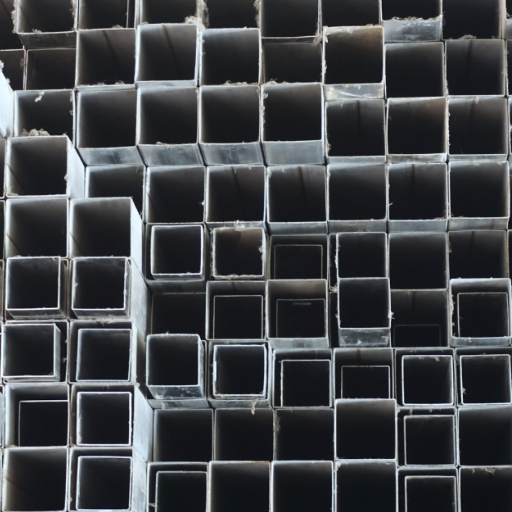
The remarkable strength, durability, and corrosion resistance of stainless rectangular tubes make them a go-to selection across various sectors. Their applications include, but are not limited to, the following:
- Construction: Incorporated in the structural frameworks, supports, and architectural elements.
- Automotive: Considerable for exhaust systems, roll cages, and various chassis parts.
- Aerospace: Used as lightweight structural supports and other high-strength components.
- Healthcare: Used in medical devices and sanitary installations owing to their greater level of hygiene.
- Food Processing: Incorporated into machinery, food storage systems to keep the food uncontaminated.
Having such favorable properties, they can be utilized in versatile applications and are usually preferred in unforgiving surroundings.
Architectural and Structural Support Applications
Stainless steel has become quintessential in architectural and structural applications owing to its durability, corrosion resistance, and aesthetic value. Here are the highlights and their specific applications.
- Bridges and Other Infrastructures: Stainless steel finds significant usage in the construction of bridges where there is a requirement for great strength and resistance to corrosion. For example, its use in suspension cables and reinforcement bars guarantees durability in extreme weather conditions.
- Skyscrapers and High-Rise Structures: It acts as a structural component as well as the cladding, and therefore gives a sleek contemporary look while handling any weather challenges.
- Roofs and Facades: Stainless steel sheets are very popular for use in roofs and the outer face of the building because of their resistance to corrosion and the structural integrity they maintain over the years.
- Residential and Commercial Sailing: Because of its aesthetic value and other mechanical properties, stainless steel is commonly used for window railings, staircases, and balcony enclosures in residential and commercial buildings.
- Public Monuments and Sculptures: Because of its shiny exterior that does not require frequent upkeep, public architects and artists love using stainless steel for public structures and sculptures.
- Industrial Structures: Stainless steel is used in heavy-duty frameworks for buildings because of its ability to withstand extreme weight and other harsh conditions.
- Waterfront Structures: The resistance to corrosion makes it perfect for piers, docks, and similar structures that come into contact with saltwater.
These applications highlight the material’s diverse uses and adaptability, blending functionality with architecture while providing dependable support in multiple settings.
Automotive and Manufacturing Uses
The automotive and manufacturing sectors utilize stainless steel because it is strong, durable, and corrosion-resistant. In the automotive industry, it is widely used in exhaust systems, fuel tanks, and structural parts, improving the performance and life of the vehicle. Recently, the global market has experienced growth in the automotive applications of stainless steel, as there is more demand for fuel-efficient and lightweight vehicles.
The construction industry also uses stainless steel for manufacturing because of its unique properties. It is used in the production of industrial machines, tools, and conveyor belts. Stainless steel is crucial to production lines that operate in high-temperature and wear-resistant environments, especially in food and pharmaceutical industries, which have strict cleanliness standards. This integrates stainless steel with innovation and efficiency in automotive and manufacturing progress.
Indoor vs Outdoor Environment Considerations
While evaluating the differences between indoor and outdoor environments, air quality, temperature control, and material durability need to be considered. Indoor environments are especially beneficial for precision operations as they can provide stable temperature, humidity, and cleanliness. Unlike indoor environments, outdoor settings are often subjected to sunlight, wind, and precipitation, which can impact the function and lifespan of the materials used.
For instance, stainless steel used in outdoor applications must be tailored to resist moisture, pollutants, and corrosion caused by weathering, and the specific materials. Research shows that sectors demanding endurance and sustainability increasingly use alternative coatings or alloys of stainless steel to perform in outdoor exposure. While indoor environments prioritize aesthetic appeal, polished and brushed finishes also add effortless maintenance, which outdoors do not offer.
These considerations can greatly impact achieving the desired operational efficiency as well as functionality for the targeted environment. New strides in material technology have greatly increased the ease of indoor and outdoor operations.
Why Choose Metric Stainless Steel Rectangular Tube for Your Project?
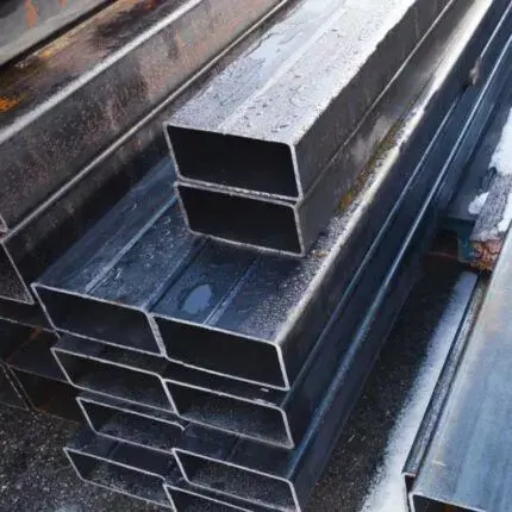
Due to stainless steel rectangular tubes’ structure, they are durable, resistant to corrosion, and versatile for use in many different types of construction and manufacturing projects. Moreover, they endure well both indoors and outdoors, which makes their use long-lasting in harsh conditions. Their robust structure makes them maintain a clean, contemporary look that is easy to work with and fits many design requirements, hence, easy to maintain and cost-effective in the long run. Choosing metric sizing ensures precision and compatibility when dealing with international projects, which eases the design and manufacturing processes.
Versatility and Range of Available Options
Metric aluminum tubes are available in an extensive selection of profiles and finishes, including round and square, polished or surfaced. These variations can meet the demands of Construction, Automotive, Aerospace, and Furniture design. In addition, these tubes with different grades can be tailored to suit the assembly requirements, serving the interests of strength, durability, or lightweight, making them very appealing to Manufacturers and Designers alike. Their flexibility for adaptation makes them the ideal choice for a plethora of industries.
Ideal for Structural Projects Requiring High Strength
Aluminum tubes are regarded as a preferred option for demanding structural applications because of their high strength-to-weight ratio. These tubes resist immense loads while remaining lightweight, which is advantageous in sectors such as aerospace and automotive. For example, some grades of aluminum tubes have a tensile strength of 6061-T6, which can withstand 45,000 psi of pressure and stress. Moreover, the ability to resist corrosion increases their durability, lending them support in offshore and other harsh environments, providing long-term functionality in seafaring or outdoor projects. The combination of strength, durability, and resistance makes these aluminum tubes widely useful for engineering and architectural applications.
Aesthetic Advantages in Modern Applications
Aluminum tubes are valued and appreciated not only for their structural abilities but also for their socioeconomic veneer that is vital in modern design and architecture. Given are a few aesthetic benefits along with their influences:
- Sleek and modern appearance: Aluminum tubes are structurally flawless, and their smooth surface gives them an attractive, polished look that complements current design styles. Thus, they are extensively chosen for visible structural components of construction and cabinetry.
- Custom finishes: Aluminum tubes can undergo various methods of finishing, like anodizing, powder coating, or polishing. For example, anodizing aluminum accentuates the existing metallic luster while additionally presenting options for hue selection.
- Lightweight elegance: The lightweight nature of aluminum tubes makes it possible to devise intricate artistic designs for structures while upholding elegant aesthetics and practicality.
- Corrosion-resistant sheen: Be it outdoors or other harsh environments, aluminum preserves its luster over time. Thus, ensuring structures or products look new for years without minimal maintenance.
- Adaptability to complex designs: Consider it an architectural marvel; aluminum tubes can be intricately shaped or extruded to fit innovative architectural designs, making aluminum tubes perfect for elaborate,e head-turning designs.
Because aluminum tubes can withstand extreme applications, they become the preferred option for luxury interiors, dynamic architectural facades, and artistic sculptures.
How Does Stainless Rectangular Tube Perform in Harsh Environments?
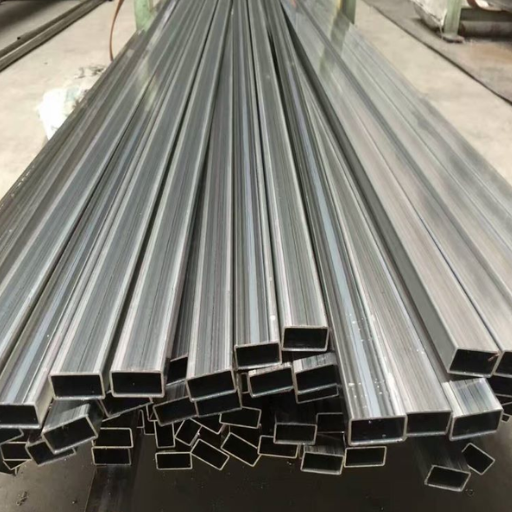
Stainless rectangular tubes are proficient in extreme environments because of their durability, strength, and corrosion resistance. They stand up to moisture, rust, and even severe heat, making them perfect for use in industrial, marine, and outdoor exigent setting. Moreover, their reliable performance in tough conditions without constant repair or replacements, coupled with low maintenance needs and long lifespan makes them excellent.
Resistance to Corrosion in Various Industries
Corrosion resistance is essential in many industries as it affects the lifespan and efficacy of materials in harsh conditions. A major example is the marine Industry, which uses stainless rectangular tubes that are constantly submerged in saltwater and high humidity. These materials are also applied in the chemical processing industry to handle strongly reactive agents without losing their structural integrity. Research claims that materials with good resistance to corrosion can decrease maintenance expenses by 25% in a couple of years, proving them to be an economically smart choice.
The construction industry reaps major advantages as well, especially in high rainfall or urban areas with acid rain. Stainless rectangular tubes offer corrosion-free sustained support, which, together with the integrity of the infrastructure, helps endure the surpassing of the expected lifecycle. In the automotive and aerospace industries, durable and light corrosion-resistant materials enhance performance, decrease the frequency of replacements needed, and improve overall safety while significantly reducing costs. This adaptability highlights the significance of stainless rectangular tubes in regions that require dependability and strength without compromise.
Structural Integrity in Extreme Conditions
Withstand deformation, maintain mechanical stress stability, and ensure safety. Stainless weld rectangular tubes possess these attributes, making them crucial for enduring rigorous, precise conditions. During extreme cryogenic and high-heat applications, certain alloys of stainless steel withstand temperatures ranging from -250°F to over 1500°F. Additionally, offshore oil and gas industries benefit from the tubes’ capability to retain structural integrity within high-pressure corrosive environments because stainless steel resists corrosive materials. Research confirms these attributes allow stainless weld rectangular tubes to preserve shape and resist physical change when subjected to stress.
Maintenance Requirements for Longevity
Appropriate maintenance is critical to ensure the performance and lifespan of stainless rectangular tube components. Periodic inspections should be performed for signs of wear, damage, and corrosion in hostile environments for the tubes. For surfaces, non-abrasive cleaner solutions should be used to avoid stimulating the formation of contaminants that would cause corrosion over time. For outdoors or industrial locations, protective coverings would aid in resisting environmental damage and offer additional resistance. Mechanical stresses and excessive loads that threaten the tubes’ structural integrity also have to be addressed. The above proactive measures would improve the reliability of the material in critical applications while enhancing its lifespan.
What Fabrication Techniques Work Best with Stainless Steel Rectangular Tube?
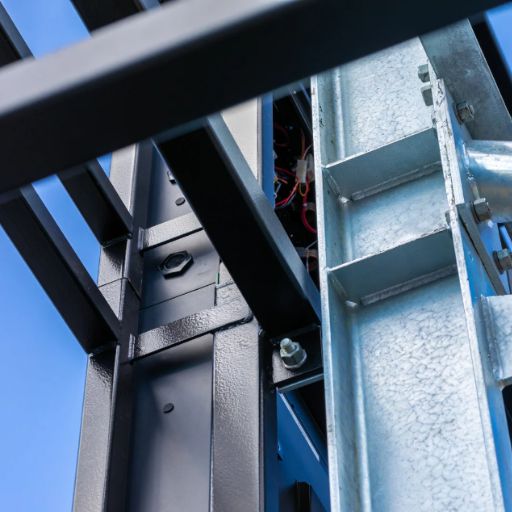
Techniques that uniformly maintain the strength and accuracy of the stainless steel rectangular tubes are the ones best suited for the fabrication of such tubes. Common methods include:
- Cutting: Laser cutting is preferred when it comes to accuracy and clean edges, but for simpler projects, saw cutting is less expensive.
- Welding: TIG (Tungsten Inert Gas) welding is very popular because it provides scrupulously clean welds, which are strong and reusable stainless steel welds.
- Bending: Press brake machines have proven effective in bending stainless steel tubes and preserving their structural strength.
- Polishing: The surface finish can be improved by mechanical or electro-polishing, especially for parts that need a clean finish, aesthetically pleasing surface, low roughness without corrosion, or even corrosion resistance.
These approaches provide good quality results, preserving the material characteristics essential to the component.
Welding Methods for Stainless Steel Tubing
My main focus when welding stainless steel tubing is ensuring that the joints are strong, durable, and corrosion-resistant. My go-to techniques for accomplishing these goals are TIG welding and MIG welding. I always consider what materials I am working with and their form; for example, I know that TIG welding works best with thin stainless steel tubes while MIG welding is better for thick ones. I also consider other factors like how I prepare the materials, how much heat I apply, and which type of filler metals I use, so I can keep the properties of stainless steel as intended.
Cutting and Forming Rectangular Tubing
When forming and cutting rectangular stainless steel tubing, organization and attention to detail are crucial. A CNC machine offers smooth edges and precision cuts while also saving material. Common tools that are used for this task are band saws and cold saws. These tools provide overheating-free straight cuts. About forming, accurate shapes can be achieved with mandrel bending and press braking while retaining material strength. Moreover, the use of high-quality lubricants during machining minimizes friction between surfaces, thereby reducing wear on the tool and maintaining a level of consistency. Recent industry developments report improvements in machining efficiency and accuracy in different applications.
Finishing Options for High-Quality Appearance
Finishing techniques often blend several different approaches based on the type of material and what is trying to be accomplished as a final result. Common finishing methods are anodizing, powder coating, and electroplating, which are all effective regarding durability, corrosion, and surface appearance. For example, anodizing increases the oxidation layer on aluminum, thus increasing the oxide layer’s surface hardness and wear resistance, while powder coating offers a protective and eco-friendly cover with excellent retention of hues. Sleek and uniform surfaces can be achieved by precision polishing and power brushing, and these are popular in the automotive and architectural industries. Recent studies have shown that finishing technology has now provided lowered processing times and improved energy efficiency, ultimately saving money without sacrificing quality. Perfect finishes not only improve the performance of products but also their aesthetic value for sophisticated consumers as well.
Reference Sources
1 、”Recent research on stainless steel tubular structures”:
- Key Findings: This study focused on the mechanical properties and design rules for stainless steel tubular members, including rectangular tubes. It highlighted the significant strain-hardening effects in austenitic stainless steel, which enhances mechanical properties by up to 100% during cold forming. The research also addressed the nonlinear stress-strain characteristics and their impact on buckling resistance and serviceability.
- Methodology: Experimental tests were conducted on square, rectangular, and circular hollow sections, including welded joints. Analytical modeling was used to propose design rules, which were integrated into the Australian standards for stainless steel structures.
2、”Experimental behaviour of recycled aggregate concrete filled stainless steel tube stub columns and beams”cold forming:
- Key Findings: This study investigated the structural behavior of recycled aggregate concrete-filled stainless steel tubes (RACFSST). It found that the confinement provided by the stainless steel tube enhanced the deformation resistance and load-bearing capacity of the recycled concrete. The study also evaluated the accuracy of existing design codes for predicting the performance of these composite structures.
- Methodology: A total of 28 specimens (14 stub columns and 14 beams) were tested under short-term loading. The tests varied the recycled aggregate replacement ratio and cross-section type (circular and square).
3、”Numerical modeling of rectangular concrete-filled double-skin steel tubular columns with outer stainless-steel skin”:
- Key Findings: This research developed a finite element model to analyze the behavior of rectangular concrete-filled double-skin steel tubular (CFDST) columns with an outer stainless steel skin. The study demonstrated that the model accurately predicted the axial strength and deformation responses of these columns. It also validated the Australian/New Zealand standards for composite structures.
- Methodology: Numerical simulations were conducted using Abaqus software, incorporating factors like confinement, strain hardening, and geometric imperfections. A parametric study was performed to assess the impact of material and geometric properties on column performance.
Frequently Asked Questions (FAQs)
Q: What is the typical product specification for 304 stainless steel rectangular tube?
A: The yield strength for 304 stainless steel rectangular tube is around 30,000 psi, and its tensile strength is approximately 75,000 psi. It is usually in stock with a wall thickness of 0.5mm to 6mm and a size range from 10mm x 20mm to 400mm x 600mm. The tubes are usually made to ASTM A554 or A312 standards and surface treated with mill, brushed, polished, or #4 finishes. These specifications guarantee uniformity within the range of products whilst retaining the material’s popularity for its corrosion resistance.
Q: Which industries most frequently utilize the 304 stainless steel rectangular tube?
A: Due to its adaptability and remarkable corrosion resistance, the 304 stainless steel rectangular tube finds application in various industries. Food and beverage processing, architectural structures and frameworks, automotive components, kitchen equipment, pharmaceutical manufacturing, chemical processing, and even some specialized buildings are its main applications. Additionally, 304 stainless steel is particularly useful in places where hygiene is important, like breweries, dairies, and the manufacturing of medical equipment, because it is easy to clean and stain-resistant. This dependable performance across many environments makes it a standard material for engineers and designers.
Q: How does a 304 stainless rectangular tube measure up to 316 or 430?
A: 304 stainless steel rectangular tube is, at a base level, balanced when compared to other grades. 316 has molybdenum and is much more resistant to corrosion, particularly in saltwater, but is 20-30% more expensive. Grade 430 is cheaper, but it has poorer corrosion resistance and reduced formability. 304 is the middle ground, which offers excellent corrosion resistance for not too much more than 316. This ensures 304 can be the most used stainless steel grade in rectangular tubing with no concern for extreme chemical exposure.
Q: What fabrication methods can be used with 304 stainless steel rectangular tube?
A: A dashboard of various methods exists for fabricating the 304 stainless steel rectangular tube. These methods include cutting (saw, laser, waterjet, and plasma), welding (TIG and MIG are preferred for clean results), bending (using appropriate tools for defect-free parts), drilling, tapping, and surface improvement operations. It is best to pay careful attention to filler material during welding, using something like ER308L to maintain the weld joints’ anti-corrosion properties. 304 stainless steel’s formability is good; it can be adapted to most fabrication processes, but proper techniques to prevent work hardening during forming operations must be employed.
Q: What are the maintenance requirements for products made from 304 stainless steel rectangular tube?
A: Products made from 304 stainless steel rectangular tube can be maintained with light cleaning to retain their striking aesthetic and excellent corrosion resistance. Through commonplace methods, like washing with soap and water, most applications can be served. If located outside, periodic cleaning with outdoor stainless steel cleaners can alleviate surface discomforts that could potentially lead to staining, localized corrosion, or other forms of corrosion. Do not use harsh abrasives, cleaners containing chlorides, or anything that harms the passive oxide layer. When maintained properly, 304 stainless steel products will endure the test of time, retaining their appearance and structural integrity for decades, and making them a dependable option for long-term installations.
Q: How sustainable is 304 stainless steel rectangular tube?
A: There are multiple reasons supporting the claim that a 304 stainless steel rectangular tube is considered environmentally sustainable. New stainless steel products are composed of 60% recycled materials, and a 304 stainless steel rectangular tube is 100% recyclable without any quality degradation. Its long service life means less frequent replacements, and due to its excellent corrosion resistance, there is no need for problematic coatings or treatments required from the environment. Although a significant amount of energy is used to produce it initially, the durability and recyclability of the 304 stainless steel gains offset the investment when measured over its lifetime. All the mentioned factors, despite the feeble initial expense for sustainable projects when compared to carbon steel or aluminum, make 304 stainless steel a reliable choice for projects that have sustainability as a priority.

